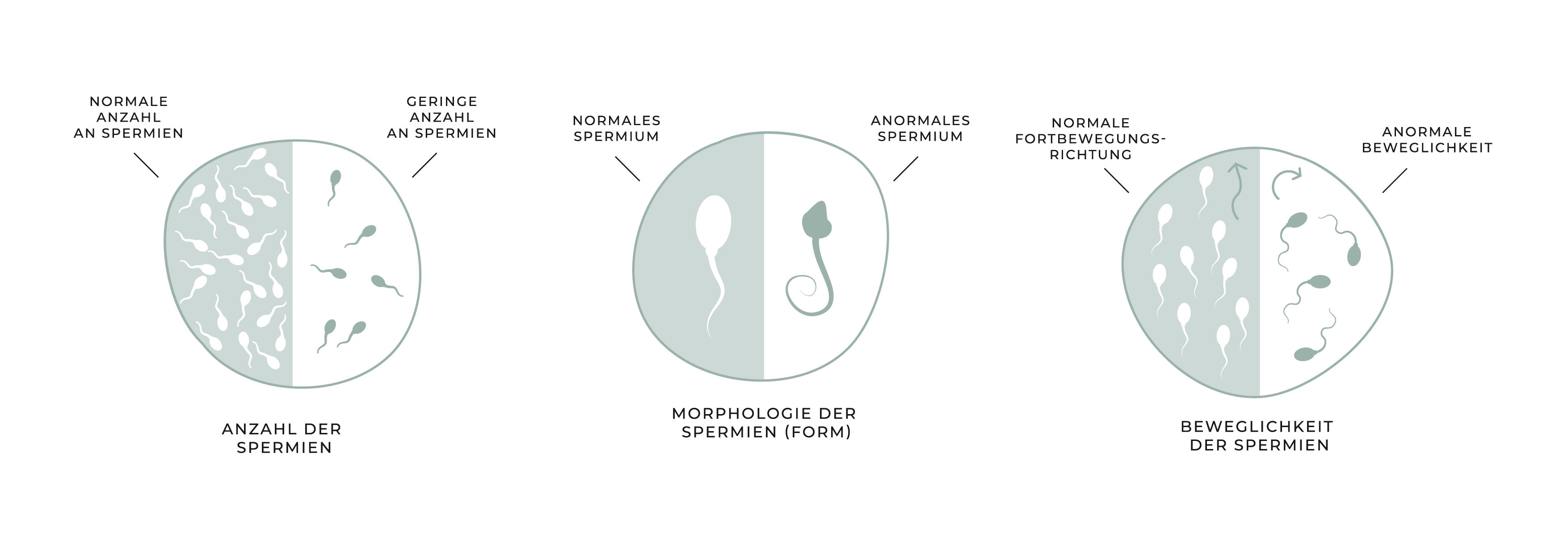Male infertility - the taboo subject
Sperm count has decreased by over 50% since the 1970s and continues to decline by approximately 1% annually. This decline in sperm count is not influenced by age, unlike the decrease in female fertility. In about 40% of cases of infertility, the man is the cause. According to the World Health Organization, infertility is defined as a man's inability to conceive a child with regular, unprotected intercourse (during the woman's fertile days) within a year. However, infertility in men is often a taboo subject. Feelings of shame and emasculation due to infertility can negatively impact self-esteem and create significant psychological stress.

You are not alone
It is important to understand that you are not alone! Difficulties are common and there are many factors that can cause them.
While it may not be talked about often, there are millions of men around the world who are dealing with similar challenges.
In addition to medical help and emotional support, taking micronutrients is also an important part of improving male fertility.
Disruption of sperm production
Sperm must be capable of reaching the egg. The following parameters are crucial in this regard.
Decreased sperm count: OLIGOZOOSPERMIA
- The quantity of sperm has diagnostic significance and provides information about semen production. Additionally, it gives insights into the number of sperm transferred during sexual intercourse.
Reduced number of motile sperm: ASTHENOZOOSPERMIA
- Mobility is a crucial factor for progress in the female genital tract. Sperm cells need to reach the egg, and targeted forward movement is essential.
Decreased number of normally formed sperm: TERATOZOOSPERMIA
- The appearance of the sperm is analyzed based on the head, middle piece and tail areas. In fact, most sperm are not normally shaped, such as having multiple heads or tails. According to the WHO, the normal value is already reached with 4% normal sperm.
Disruption of the transport pathways
The testicles produce enough sperm, but these are blocked by adhesions and hardening or a blockage of the seminal ducts. The result: a complete absence of sperm in the ejaculate.
Causes of male infertility
Undescended testicles
During childhood, the testicles do not descend correctly into the scrotum but remain in the abdominal or inguinal region. Later sperm production can be permanently impaired if undescended testicles are not corrected in a timely manner.
Infections
A mumps infection (mumps orchitis) during childhood can lead to inflammation and hardening of the testicles. This condition is associated with significantly reduced sperm production later in life.
Testicular varicose vein
The spermatic cords in the testicles are surrounded by a network of veins. When this network becomes enlarged, it's referred to as a varicocele. Typically, the left side of the testicle is more commonly affected because blood drainage is less efficient on that side. The significant heat generated due to the backflow of blood in the testicular area can impact fertility.
Hormonal Disorders
Hormonal imbalances in men can also lead to infertility. The following hormones are particularly important for the production of sperm: testosterone, FSH (follicle-stimulating hormone), and LH (luteinizing hormone). A deficiency in these hormones can limit male fertility.
Genetic Defects
Some conditions and genetic defects that can affect male fertility include:
Klinefelter Syndrome: This condition involves reduced production of male hormones and a decrease in the quality of sperm.
Y-Chromosome Deletion: Deletion of specific genetic information on the Y chromosome, which is responsible for male sexual development.
Genetic defects can be identified through blood tests and genetic testin
Age
Age also plays a significant role in male fertility. After the age of 35, sperm quality tends to decrease. This age-related decline includes a reduction in sperm motility and count. Additionally, there is an increased occurrence of chromosomal abnormalities (DNA fragmentation) in individual sperm as men age.
Nutrient Deficiency
A deficiency in nutrients can have a negative impact on the quality and quantity of sperm. There are various nutrients that are essential for normal sperm production and function. Examples include zinc, selenium, vitamin C, vitamin D, vitamin B, coenzyme Q10, and folic acid. These nutrients can be supplemented through specialized dietary supplements. However, the quality of the active ingredients, the composition, and the optimal dosage are crucial factors to consider.
Other risks
The causes of impaired fertility in men are diverse. Previous illnesses, often in childhood, such as infections, inflammations of the testicles (or adjacent structures), bladder, or prostate, can affect male fertility. Additional risk factors include stress, dietary habits, obesity, the use of certain medications, as well as alcohol and tobacco consumption, and other environmental factors.
Additionally, increased temperature in the testicular area can have a negative impact on fertility. This can occur due to prolonged sitting, heated seats, sauna sessions, and similar factors.
Diagnosis
When facing unexplained infertility, it is common for women to be examined first, and men may undergo evaluation later. However, timely evaluation of the male partner is equally important and can save valuable time.
The diagnosis of fertility issues in men is typically conducted by a specialist in reproductive health known as an andrologist, a subspecialty within urology.
The following examinations and assessments provide insights into male fertility:
- Comprehensive Medical History: Gathering information on prior illnesses and lifestyle factors is essential.
- Physical Examination of the Genital Organs: A physical assessment of the reproductive organs can reveal important clues.
- Ultrasound Examination of the Testes: An ultrasound scan can provide information about the testicular structure and any abnormalities.
- Hormone Testing: Hormone levels, including FSH (follicle-stimulating hormone), LH (luteinizing hormone), prolactin, and testosterone, can be analyzed. Hormone imbalances can affect fertility.
- Semen Analysis (Spermiogram): Semen analysis is the most crucial test for assessing male fertility. It involves the microscopic examination of ejaculated semen and provides information about sperm quality, quantity, density, volume, and pH. The semen sample is typically obtained through masturbation after a period of sexual abstinence.
- Optional Testicular Biopsy: In some cases, a testicular biopsy may be recommended to examine testicular tissue for any issues affecting sperm production.
- Hormone Analysis:
Hormone testing can be relevant for uncovering hormonal imbalances in men. Symptoms such as fatigue, weight gain, and reduced vitality may be indicative of hormonal issues. Blood samples are used for hormone analysis. - Semen Analysis (Spermiogram):
The most critical assessment for male fertility is the semen analysis, which involves a microscopic examination of the ejaculate. This test provides valuable information about sperm quality, quantity, concentration, volume, and pH. The ejaculate is typically collected by masturbation following a period of sexual abstinence. It should be obtained under sterile conditions and ideally analyzed in a laboratory on-site or within 30-60 minutes to ensure accuracy. It is recommended to perform at least two semen analyses within a timeframe of four to twelve weeks because sperm count and quality can vary significantly.
DNA fragmentation
The role of sperm is to safely transport the father's genetic information to the egg, allowing for the creation of a healthy embryo. However, DNA breaks or damaged genetic material within the sperm can prevent new cells, and consequently, an embryo, from developing further. Even if a sperm analysis shows no abnormalities, fertility can still be restricted because it does not provide information about potential breaks in the DNA strands of the sperm. Various testing methods (such as the TUNEL or SCD test) allow for the analysis of sperm DNA using a semen sample. Currently, there are no standardized reference values, but 15-20% of mildly to moderately fragmented sperm can lead to reduced fertility. If DNA fragmentation is detected, lifestyle adjustments are recommended

Boost your sperm
The improvement of male fertility through the intake of specific micronutrients is supported by numerous medical studies. Key micronutrients for enhancing sperm production and quality include zinc, selenium, vitamin C, E, and B12, L-carnitine, and folic acid.
Supplementing these micronutrients can enhance sperm quality and quantity, increasing the chances of successful conception.
VILAVIT Male
- Regular price
-
CHF 70.00 - Regular price
-
- Sale price
-
CHF 70.00
shares











